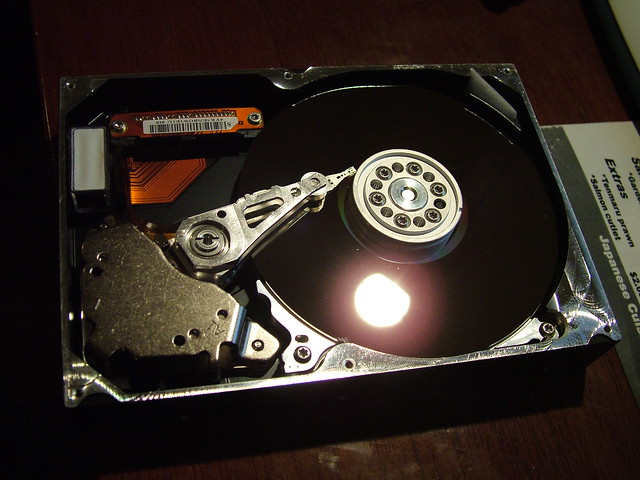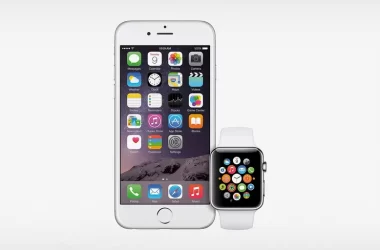Table of Contents Show
Millions of businesses across the United Kingdom use computer systems on a daily basis, whether it be PCs, Apple Mac computers, laptops or a combination thereof.
Computers have been in widespread use in the offices of many a firm for decades now, as they are great at ensuring optimum productivity and efficiency within the various operational aspects of a business.
Despite the obvious advantages that using computer systems bring to businesses in Britain today, there are some drawbacks which many business owners or heads of IT departments don’t usually think about, and that is the data that is stored within them.
A quick format will clear any data⦠won’t it?
The term âformatting’ refers to the process of wiping a hard drive so that it can be reused, for example, by installing a new operating system on it whilst it is connected to the host computer system.
You might think that formatting a hard drive or doing a âfactory install’ of the original operating system and applications will securely destroy any data that was on there, but in actual fact your data will still be there!
Computers typically store data on hard drives using a system known as a file allocation table. This is basically a database of the files and directories that are stored on your hand drive, and serves as an index of sorts. Virtually all computers and operating systems use some form of file allocation table.
When a âformat’ is performed on a hard drive, you might think that it deletes those files and directories on your hard drive, but actually all it does is wipe the contents of the file allocation table. The files and directories are still intact on the hard drive, and are only deleted when they are overwritten by new data (i.e. by new files and directories).
Privacy concerns of formatted hard drives
Let’s say that, for example, you format a hard drive or perform a factory install on it so that you can sell your computer to someone. Your hard drive will have contained all manner of sensitive data; if it got in the wrong hands, the results could be disastrous.
The person that buys your computer is a bit of a computer nerd and decides to see if they can retrieve any old files that were on the hard drive before you formatted it. Jackpot! They find all sorts of sensitive data that they can easily restore using nothing more than software which is freely available from the Internet.
Imagine if this computer nerd decided to put their blackmail hat on and attempt to extort money from you in order to keep quiet about the data that’s on there (or threatening to sell your data to the highest bidder if you don’t pay up).
As unlikely as this whole scenario sounds, it has, unfortunately, happened many a time in the past and is something that you will obviously want to avoid as the consequences don’t bear thinking about!
Therefore, it is important that you seriously think about implementing a secure data destruction policy at your business when you have to retire old computers. There are basically three types of data destruction that you can use:
1. Overwriting
The first option that anyone considering selling their hard drive or computer should undertake is overwriting the data that is already on the hard drive, before doing a format.
This process involves using some software that essentially writes a character (such as a 0 or 1, or a combination thereof) to each sector on the hard drive. A sector, in case you were wondering, is a segment of the hard drive where some data is written – typically 512 bytes worth.
You can usually obtain free software from the Internet that you can run on a bootable device such as a CD or DVD optical drive, with your hard drive physically attached to the same computer. The software detects that you have the hard drive installed, and will ask you if you want to overwrite the data on it or not.
There are different settings available, depending on what you want to do:
- Overwrite existing data;
- Overwrite all sectors on the hard drive, regardless of whether they are empty or not;
- Multiple overwrites or âpasses’ (this is where the process is repeated more than one).
2. Degaussing
If you want to render a hard drive completely unusable, you could buy an interesting bit of kit called a degausser. In a nutshell, a degausser is basically like a giant electric magnet that you place the hard drive on top of.
You typically have to rotate the hard drive on top of the degausser a few times, and then turn the hard drive over and repeat the process. Once you have degaussed the hard drive, your hard drive will be rendered inoperable and cannot be used again.
The only issue with degaussers is that they tend to be expensive devices, so it is usually more cost-effective to pay a data destruction company to do this for you and supply a certificate of destruction rather than buying the hardware and doing it yourself.
Still, if you really want to destroy your hard drive yourself but don’t want to shell out loads of cash on expensive machinery or equipment to do so, the next option could be just up your street!
3. Destruction
If you want to find a constructive way to rid yourself of the day’s stresses, then what could be a better way than to physically destroy your hard drive! There are a number of tactics that you can employ for destroying your hard drive, such as:
- Smacking the hard drive hard on a table or metallic surface a few times;
- Drilling several holes through it;
- Squashing it;
- Dropping it from a great height.
Most businesses tend to employ a firm that will securely shred your hard drive as it is often a quicker and cleaner way of physically destroying a hard drive. The shredder is literally like a shredder that you would use to shred paper with, except you feed it hard drives rather than paper!









